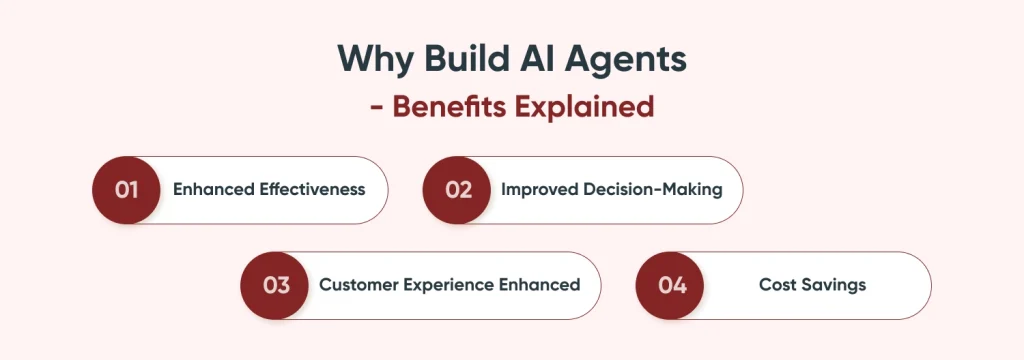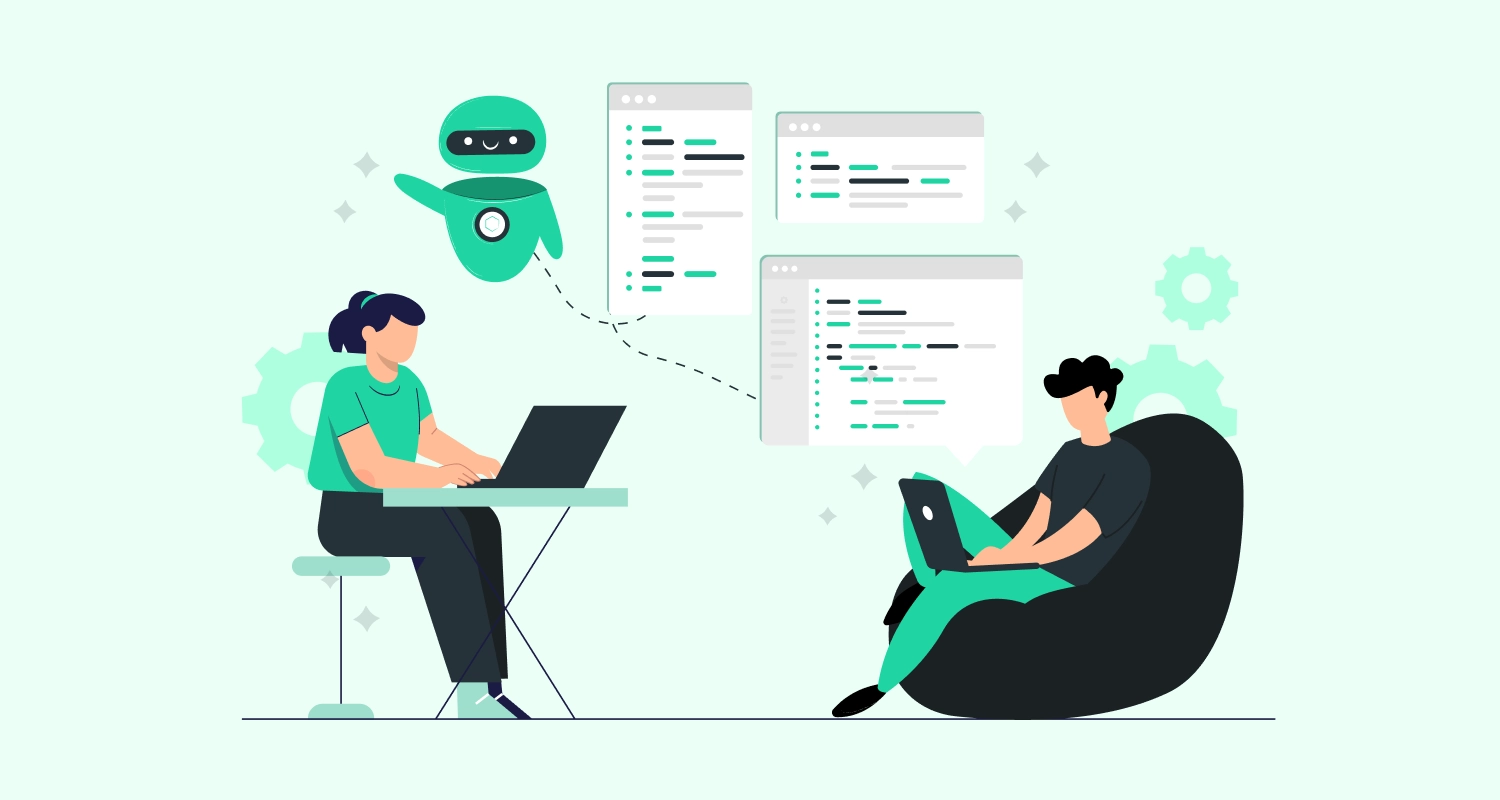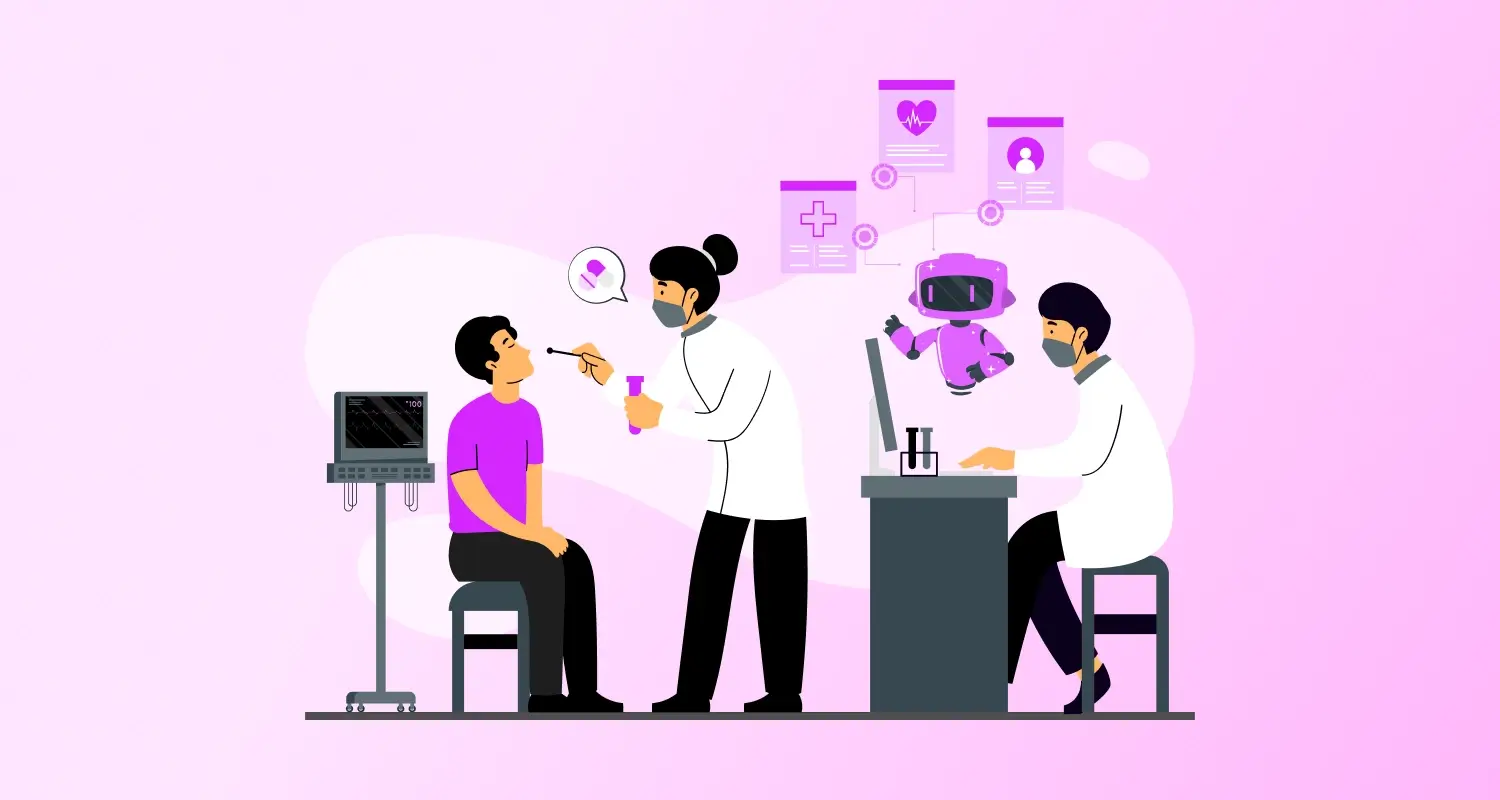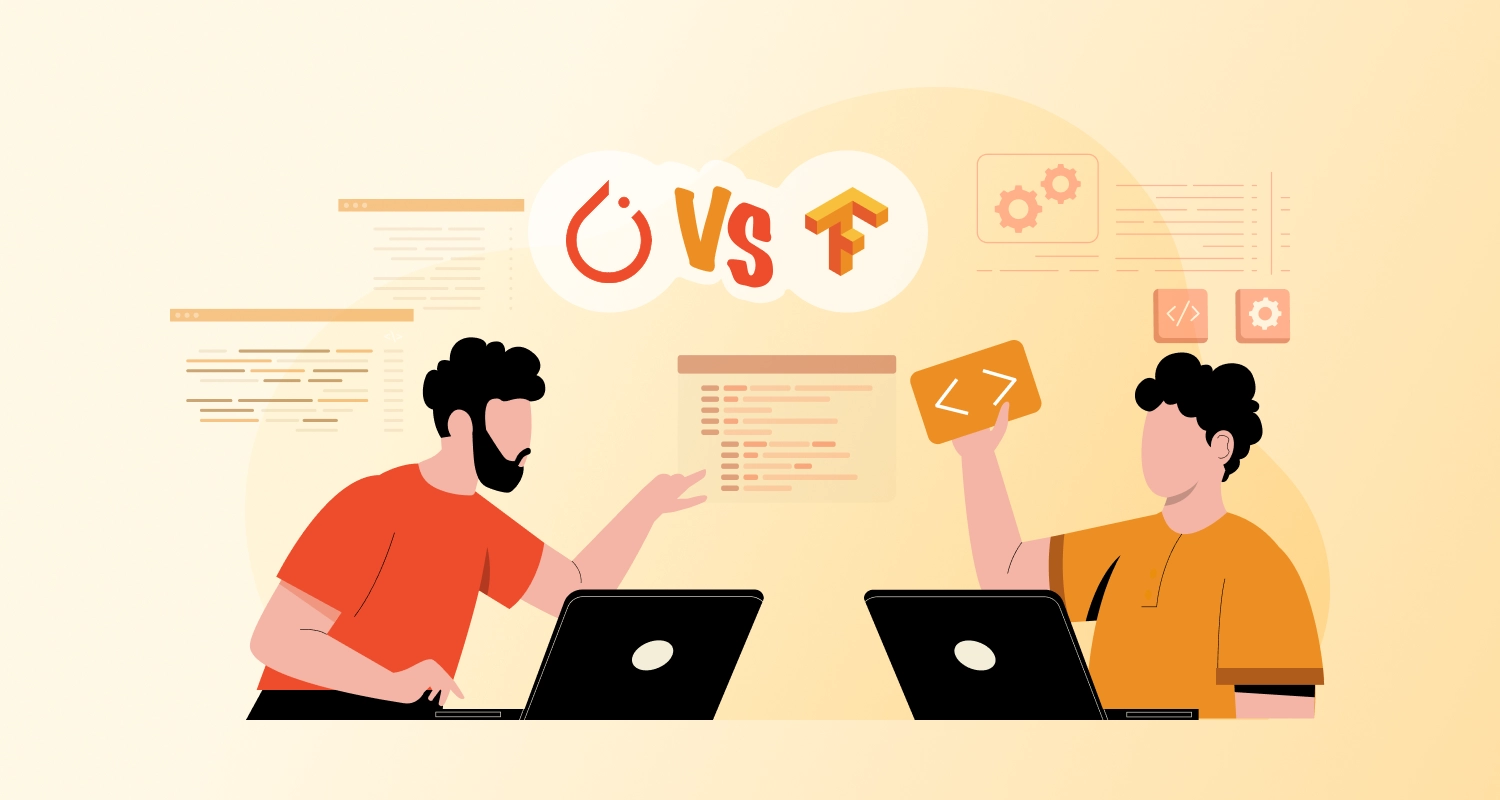As 2025 approaches, attention is turning to AI agents, which hold the potential to expand AI’s capabilities beyond simple question-answering. McKinsey estimates that generative AI solutions may boost worldwide business earnings by $2.6 trillion to $4.4 trillion annually, with the banking sector benefiting the most at $340 billion.
These artificial intelligence (AI) agents combine Large Language Models (LLMs) with particular tools and memory, allowing them to carry out various tasks to improve their functioning and provide users with more advanced assistance.
The AI trends matrix is starting to recognize AI agents, and there is a growing recognition of their potential adoption. They have varied degrees of autonomy; they can do basic activities like get information via a “web browser” or create and carry out complex plans.
This blog’s objectives are to give readers a thorough grasp of artificial intelligence (AI) agents and walk them through creating an AI agent system using AutoGen. This platform makes it easier to orchestrate, optimize, and automate complex language model activities.
What is an Intelligent Agent in AI?
An intelligent, highly effective virtual assistant that uses artificial intelligence to carry out activities on its own is known as an AI agent. Its functions include sensing its surroundings, interpreting facts, making defensible decisions, and carrying out activities to accomplish preset goals.
Proactivity and decision-making abilities are traits of AI agents. They actively interact with their surroundings, unlike passive instruments, making decisions and taking action to achieve their predetermined objectives.
Why Build AI Agents- Benefits Explained

In the digital age, AI agents may help businesses increase growth and competitiveness by streamlining operations, making smart decisions, and improving customer experiences. Below is the process for AI development with an understanding of the best practices for building AI agents using GPT.
Enhanced Effectiveness
Businesses can accomplish repetitive operations more quickly and effectively by using AI agents to automate them. Employee productivity increases and time is freed up to concentrate on more business-critical duties thanks to this efficiency gain.
Improved Decision-Making
AI systems are capable of analyzing volumes of data to provide insightful analysis for the right decision-making. AI bots can recognize the patterns and trends that manually anyone can miss by using algorithms and ML. For example, NLP in healthcare – AI agents with NLP capabilities enhance the accuracy of healthcare documentation making it easy for healthcare providers.
Customer Experience Enhanced
AI agents can improve consumer experiences by interacting with them in a timely and tailored manner. They can create AI assistants to provide prompt responses to questions and provide recommendations, which will boost client happiness and loyalty.
Cost Savings
Businesses can save a lot of money by using AI agents to automate the process. This requires resources to do manually. A high volume of jobs will cost more and also prone to make mistakes.
Types of AI Agents
- Reactive agents that keep an internal model of their surroundings and utilize it to guide decisions are known as model-based reflex agents.
- Utility-based agents weigh the possible results of their decisions and select the course of action that maximizes predicted utility.
- Over time, learning agents use machine learning techniques to make better decisions.
- Condition-action rules are the basis for the operation of simple reflex agents. They do not have an internal representation of the world; instead, they react directly to their current perceptions. In circumstances where the agent’s next action is determined just by its current perception, simple reflex agents are easy to use and very effective.
- Goal-based agents take things a step further by thinking about how their actions will affect the future. They make decisions based on the likelihood that certain activities will lead to the achievement of their goals. They can plan and select actions that result in desired outcomes because of their foresight, which qualifies them for difficult decision-making duties.

How to Build AI Agents using GPT
You must be aware by now of the strength and potential of artificial intelligence’s artificial agents. The next thing you should do is study the fundamentals of creating an AI agent that can perform specific tasks for you.
Here’s a brief rundown on creating an AI bot.
1. Identify Your Goal
Businesses must first define why they even need an AI agent in the first place before they can start developing AI agents. Make an effort to define your requirements for an AI agent app. Is it needed for document sorting or for answering client questions?
This will help you gain insight into the AI software development services we provide and the development, and if you need assistance figuring this out, our AI consultancy is available.
2. Make the Proper Framework and Library Selections
To process the data and make judgments, the basic AI model must be trained. To do this, you must select a framework and libraries that let AI developers expedite the prototyping process and optimize the development process.
Leading technologies like PyTorch, Keras, and TensorFlow can assist you. Are you up for trying something new? For LLM-based apps and AI agents, give LangGraph a try.
3. Decide on a Language for Programming
Because programming languages enable the implementation of algorithms and provide access to specialized libraries and frameworks, they are an essential tool for developing AI agents. Python is the most popular option for AI creation since it is straightforward, extremely adaptable, and simple to process. Additionally, it functions without glitches with TensorFlow.
4. Gather Information for Training
For processing and analysis, your AI bots require data. Therefore, to effectively train the machine learning models, you need to gather high-quality data. You can collect data from pre-made datasets or employ crowdsourcing techniques. Just confirm that the information is:
- High quality
- Unbiased
- Error-free
Your artificial agents’ dependability and accuracy in AI will be determined by the quality of the data. This is a very skill-intensive and labor-intensive job. Hiring data science services is our recommendation if you want to avoid becoming overworked.
5. Create the Basic AI Agent Architecture
The next step is to provide your AI agents with a strong architecture. Verify that the structure is performance-driven, highly scalable, and modular. To enable the easy pairing of additional AI agent components, leave the architecture open for integration.
6. Start Model Training
The AI agent model needs to be trained after sufficient data has been gathered and the foundational architecture is complete.
At this point, AI engineers frequently work on tasks including feeding data into the model, setting up the AI agent’s environment, putting the learning process into practice, refining the decision-making skills, and assembling all the parts to start training.
At this point, perfection can be attained by:
- Choose a suitable model from alternatives such as decision trees, random forests, and neural networks.
- Utilizing validation data, confirm and validate the model’s operation.
- Achieve continual learning for the model.
7. AI Agent Model Implementation
It’s time to deploy the model using tools like WebAssemble, Docker, Serverless Platform, or Kubernetes after it has been trained successfully. The deployment ecosystem can be selected based on your needs.
8. Test and Monitor
You must ensure the functional model is error-free, devoid of flaws, and not acting inappropriately to guarantee that your AI agents operate correctly and make intelligent decisions. To ensure that the model can meet the needs and expectations of users, remember to perform user acceptability testing.
9. Optimize
You must ensure that you are always monitoring the performance of your artificial intelligence agents after the deployment. You must add new user interaction points and feed fresh data. Furthermore, we advise you to scale the underlying structure by your business needs and update it regularly. This will ensure that the AI agents can expand to meet your changing needs.
AI developers must containerize the model and all of its connected parts throughout the deployment. Furthermore, you must:
- Improve and streamline the model
- Provide APIs that enable communication.
- Make sure that the deployment environment satisfies the necessary privacy standards and is completely secured.
- Configure the user interfaces and user interaction systems.
By following these steps, you can ensure a seamless AI agent development process and a completely tailored agent that supports your operations in various ways.
What role will AI Agents Play in the Future?
Customizing AI agents to fit the unique requirements of enterprises is a big trend that is coming soon. As these agents proliferate, it will be imperative to customize their algorithms, data sources, and outputs to correspond with the distinct objectives and workflows of every enterprise.
AI agents’ ability to make decisions is also expected to significantly improve. These more sophisticated agents can analyze large volumes of data with ease, making predictions and recommendations that would otherwise require a significant amount of human labor.
Conclusion
The potential for AI agents seems limitless as we look to the future. These agents will grow even, more self-sufficient, and ingrained in our daily lives as artificial intelligence and machine learning app development services continue to progress. But immense power also entails great responsibility. Building AI agents ethically is crucial, taking into account how they will affect the environment, the economy, and society.
CMARIX- an expert provider of AI solutions, can assist you in implementing AI agents into your business operations. We increase operational efficiency, provide a competitive advantage in the market, and expedite your processes by developing cutting-edge agent solutions. In the sprint towards the future, stay ahead of the curve. Speak with our industry experts to find out how they can assist you in maximizing the benefits of AI agents for your company.
Frequently Asked Questions
What Are the Key Use Cases for AI Agents Built Using GPT?
The most popular applications for GPT using AI agents:
1) Customer Service and Support that AI agents develop.
2) Applications for Sales and CRM.
3) Recruitment and Human Resources.
4) Customized advertising.
5) Banking and related Services.
6) NLP in healthcare.
7) Logistics and the supply chain.
8) Manufacturing.
Can GPT Be Used to Create AI Agents for Specific Industries?
AI swarms, openAI, and GPT models can all be used to develop custom AI agents. Companies can efficiently scale their operations and adapt. This maximizes the productivity of automation tools, product catalogs, and supply chain management.
What Are the Benefits of Using GPT for AI Agent Development?
Numerous benefits are provided by AI agents, including increased productivity, scalability, a more personalized and available experience for customers, cost savings, and insights derived from data. Your company can benefit from increased accuracy, quicker development and deployment, cost-effectiveness, scalability, and diversity by fine-tuning GPT models. These advantages can help you stay competitive in the AI space and accomplish your business objectives.
Can AI Agents Using GPT Be Integrated with Other Business Systems?
Customize and adjust AI models to fit your specific requirements for AI agent development using GPT-4 models. Because of its adaptability, you may match the AI’s output to certain use cases and business needs, guaranteeing seamless integration with your current systems.







